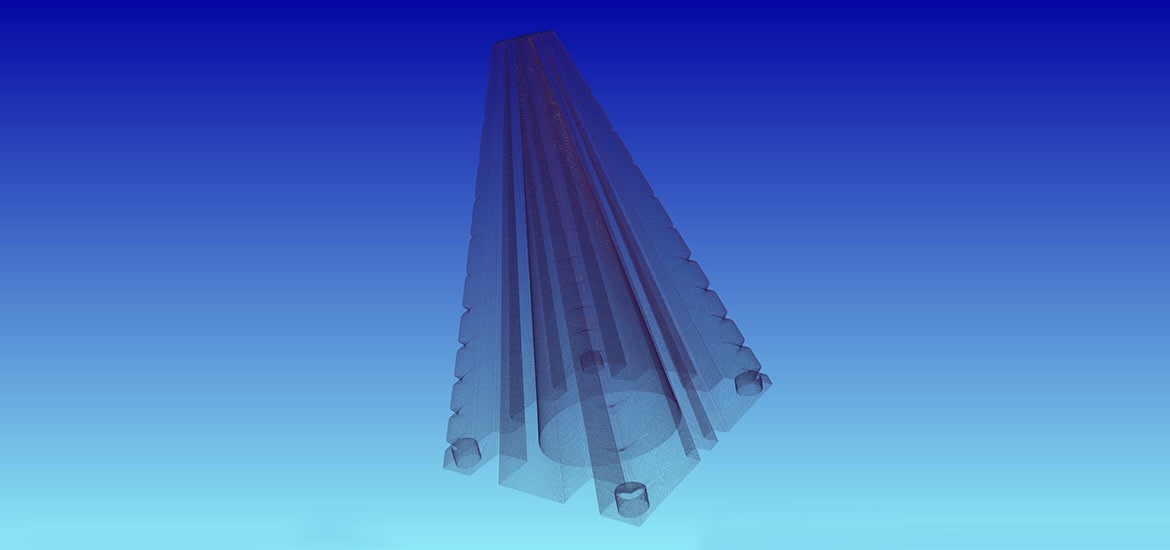Goddard Identifies New Indicators for CT Systems
July 16, 2019
1-minute read

Computed Tomography (CT) is a powerful radiographic method that provides a versatile inspection technique whenever the primary goal is to quantify volumetric features in three dimensions, but it doesn’t come without its challenges. Measuring its system performance is more complicated than doing so for traditional Radiographic Testing systems.
“Because the samples we inspect with CT are generally more complicated, and because the CT system has so many variables, it makes the process for developing appropriate Image Quality Indicators more complicated,” explained Justin Jones, Nondestructive Evaluation (NDE) lead at Goddard Space Flight Center. “Traditionally, these indicators are important for showing the effects of changing resolution, contrast and noise on image quality, but with CT systems, we need more sophisticated indicators to demonstrate that our inspection system can reliably detect defects.”
To combat the issue, Goddard Space Flight Center is actively developing innovative CT Image Quality Indicators (IQIs) in support of the Office of Safety and Mission Assurance’s NDE Development Program.
“The development of new CT IQIs is driven by the need to have a versatile tool for common baselining of CT systems or repeated inspections across NASA,” said Jones.
In the paper, “NASA GSFC Advances Computed Tomography Systems Qualification State-of-the-Art,” Jones outlines the center’s efforts to date, including initial efforts, how Additive Manufacturing played a part and the various challenges faced throughout the effort. NASA is currently in the process of applying for a patent for the multi-functional and scalable Pyramid Image Quality Indicator concept. Questions about the project or the paper can be directed to Jones.